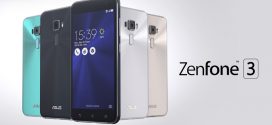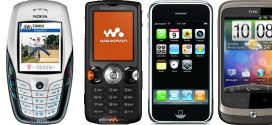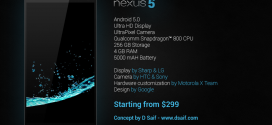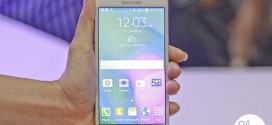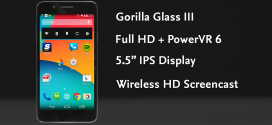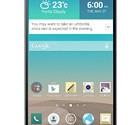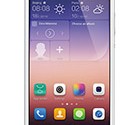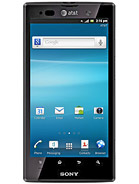 Today we’re going to be reviewing the Sony Xperia Ion LTE. This is a very powerful phone. Maybe not as far as hardware goes, but all together it is one mean machine. The Sony Xperia Ion LTE is also known as Sony Xperia ion LT28at if you purchase it at AT&T and it is also known world-wide as the Xperia ion LTE lt28i. Since I don’t really plan on dabbling too much on the intro, let us begin this little review quickly.
Today we’re going to be reviewing the Sony Xperia Ion LTE. This is a very powerful phone. Maybe not as far as hardware goes, but all together it is one mean machine. The Sony Xperia Ion LTE is also known as Sony Xperia ion LT28at if you purchase it at AT&T and it is also known world-wide as the Xperia ion LTE lt28i. Since I don’t really plan on dabbling too much on the intro, let us begin this little review quickly.
SUMMARY
As promised, I will start with a brief summary of each phone in which I’ll state some pluses and minuses according to the hardware specs. This phone has many advantages : a most powerful camera, a pretty good display with quite a bit of protection, a relatively decent battery and a decent hardware. However, I’m not sure whether or not “decent” will cut it if you want to play some of the more video demanding games out there. Other than that, I see no more disadvantages to this device.
GENERAL
We’ll now take a brief look at the more general aspects of the Sony Xperia Ion LTE. Here you can find out a bit about the supported networks of the device and the announcement and release dates. The Sony Xperia Ion LTE uses not only the two 2G and 3G networks, but as you can obviously tell from the name, it also uses 4G networks. Those networks are as following : 2G ones ( GSM 850, GSM 900, GSM 1800 and GSM 1900 ), 3G ones ( HSDPA 850, HSDPA 1900 and HSDPA 2100 ) and 4G ones ( LTE 700 MHz Class 17, Class 1700 and Clas 2100 ). This phone was officially announced in January 2012 and it is expected to come out somewhere around Q3 of 2012. That’s about it for the general stuff, so let’s move on now to the next part of the review.
BODY
Next up we’ll be taking a brief look at the body of the aspect of the Sony Xperia Ion LTE. Here you can find out a bit about the size and weight of the Sony Xperia Ion LTE and see whether or not the device has any particularities that might make it stand out from a crowd. The size of the Sony Xperia Ion LTE is around 133 x 68 x 10.8 mm big. This phone also weighs somewhere around 144 grams. This phone also has Touch-Sensitive Controls instead of frontal buttons. That’s about it for the aspect, so let’s move on since there still is a lot to go until then end of this article.
DISPLAY
Next up we’ll be taking a brief look at the display of the device. Here you can find out a bit about the type of screen, the screen size, the screen’s resolution and pixel density as well as see whether or not the screen has any protection and any particularities that might make it stand out from a crowd. The screen of this phone is an LED-backlit LCD with a capacitive touchscreen and 16 million colors. The screen size is around 4.55 inches big. This screen can house a resolution of around 1280 x 720 pixels. The pixel density of this phone is as clear as it gets – 323 ppi. This phone also has an Advanced Multitouch that can support up to 4 simultaneous fingers. The screen protection of the Sony Xperia Ion LTE is Scratch-Resistant Glass surface. The Sony Xperia Ion LTE also has Sony Mobila BRAVIA Engine on it and Timescape UI, should you choose to activate it. That’s about it for the display, so let’s move on.
SOUND
Next we’ll take a look at the audio output capabilities of the Sony Xperia Ion LTE. Here we’ll try and see whether or not the Sony Xperia Ion LTE has any particularities or sound enhancements since, other than that, all the Android phone have the same alert types, loudspeaker and 3.5 mm jack. Sadly, with all its good points, audio is not one of them for the Sony Xperia Ion LTE. This phone has no sound enhancement whatsoever installed on it. That being said, let’s move on now to the next part of the review.
MEMORY
Next up we’ll be taking a look at the memory of this phone. Here you can find out a bit of info about the RAM of the device, the internal storage space and ways of enhancing said storage space. The RAM memory of the Sony Xperia Ion LTE is 1 GB. This would have been pretty good if the phone wasn’t to come out now when the maximum is 2 GB. That being said, the RAM memory of the Sony Xperia Ion LTE is half-good, thus, decent. The Storage space of the Sony Xperia Ion LTE is 16 GB. Should you require more, know that the Sony Xperia Ion LTE has a Micro SD card slot which uses any Micro SD of up to 32 GB. That’s about all there is to the memory of the device, so let’s move on.
DATA CONNECTION
Time to take a brief look at the connectivity of the Sony Xperia Ion LTE. Here you can find out a bit about the GPRS and EDGE of the device, the Speed and WLAN as well as the Bluetooth, USB an other ( if any ) connections. This phone has both GPRS and EDGE. While it isn’t specified which class they each belong to, it is known what speed they can reach and I say that’s even better. The GPRS goes up to 86 KB/s and teh EDGE up to 237 KB/s. The Speed of this device can be measured as following : HSDPA at 21.1 MB/s, HSUPA at 5.8 MB/s, LTE Cat 3 at 50 MB/s Upload and 100 MB/s Download. The WLAN of the Sony Xperia Ion LTE is a Wi-Fi 802.11 b/g/n with Wi-Fi Direct, DLNA and Wi-Fi hotspot. The Bluetooth of the Sony Xperia Ion LTE is a v2.1 one with A2DP and EDR. This phone also has NFC and its USB port is a Micro USB v2.0 one with USB On-the-go support. That’s it for the connectivity of the phone, so let’s move on now.
CAMERA
Next up we’ll be taking a brief look at the camera of the device. Here you can find a bit of info about the main and secondary camera as well as see the features and capabilities of those cameras. The main camera of the Sony Xperia Ion LTE, as previously mentioned, is a really powerful one – a 12 MP one. This camera can photograph at resolutions of around 4000 x 3000 pixels. The features of this camera are as following : autofocus, LED flash, geo-tagging, touch focus, face and smile detection, 3D sweep, panorama and image stabilization. The video recorder of the main camera can record in 1080p full HD at around 30 frames per second. The features of the video recorder are as following : continuous autofocus, video light and video stabilizer. The secondary camera of the Sony Xperia Ion LTE is a 1.3 MP one which can record at 720p HD with around 30 frames per second. That’s it for the camera, so let’s move on now.
BATTERY LIFE
Next up we’ll be taking a brief look at the battery of the Sony Xperia Ion LTE since battery is usually such an issue with Android Phones. Here you can find out a thing or two about the battery type of the device and see how long it can function. The battery of the Sony Xperia Ion LTE is a Standard Li-Ion 1900 mAh. This battery can work for : up to 300 hours of stand-by in 2G and up to 350 hours of stand-by in 3G, up to 10 hours of talk-time in 2G and 4 hours of talk-time in 3G. This phone can also survive for up to 12 hours of music play. That’s about it for the battery of life of the Sony Xperia Ion LTE so let’s move on now.
HARDWARE
Next up we’ll be taking a brief look at the hardware of the Sony Xperia Ion LTE. Here you can find out a thing or two about the three main hardware components of the device : processor, motherboard and graphics card. The processor of this phone is a Dual-Core 1.5 GHz processor. This processor is accompanied by a Qualcomm MSM8260 Snapdragon chipset and an Adreno 220 GPU. All and all a pretty powerful hardware configuration, but not one of the most powerful. That’s it for the hardware so let’s move on now to the next part.
SOFTWARE
Next up we’ll be taking a look at the software of the device. Here you can find a bit of info about the OS version of the device and see whether or not it can be upgraded to a better one. The Android OS version of the Sony Xperia Ion LTE is Android OS v2.3 Gingerbread. Luckily, there is news of a planned upgrade to v4.0 Ice Cream Sandwich, so there’s no need to despair. Since there’s no more to be said about the software, let’s move on now to the final part of the review.
FEATURES
Last but not least, let’s take a brief look at the features and capabilities of the Sony Xperia Ion LTE. The sensors of this phone are : Accelerometer, Gyro, Proximity and Compass. The messaging on this phone is done via : SMS ( with Threaded View ), MMS, E-Mail, IM and Push Mail. The browser of the Sony Xperia Ion LTE uses HTML5 and has integrated support for Adobe Flash. The Sony Xperia Ion LTE also has a Stereo FM radio with RDS. The GPS of this device has integrated support for A-GPS and GLONASS. This phone also has Java via Java MIDP emulation. The Sony Xperia Ion LTE is available in the following colors : Black and White.
Here is a list of the things that the Sony Xperia Ion LTE can do :
- SNS integration
- ANT+ support
- HDMI port
- Active noise cancellation with dedicated mic
- MP4/H.263/H.264/WMV player
- MP3/eAAC+/WMA/WAV player
- TrackID music recognition
- Google Search, Maps, Gmail, YouTube, Calendar, Google Talk
- Document viewer
- Voice memo/dial/commands
- Predictive text input
This concludes our little review of the Sony Xperia Ion LTE. If you feel that anything is lacking from this review feel free to leave your suggestions in the comment section below for things which should be added and I will be sure to take them into consideration when writing my future projects. In the meantime, I sincerely hope you had as much fun reading my little review as I had writing it.


